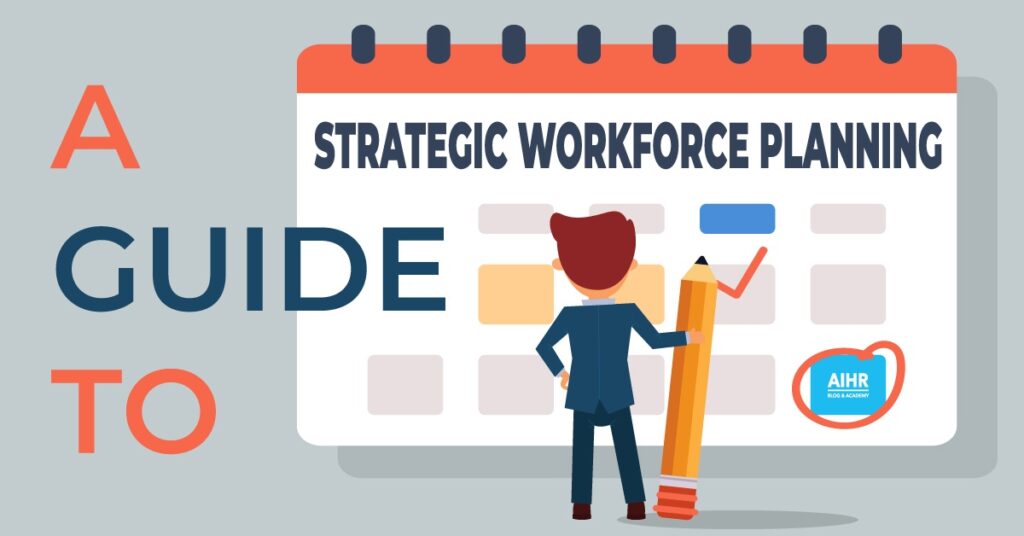What is work force planning?
Workforce planning is the process of analyzing and strategizing for an organization’s current and future workforce needs based on its goals and vision for the future. It involves taking a strategic, holistic approach to maintaining your workforce so you aren’t blindsided by ongoing or unexpected changes. Workforce planning can help you align your workforce supply and demand with your business strategy, prepare for the future, create a road map for achieving your goals, and optimize your staffing and budget.
What are the components of workforce planning?
Some of the typical components that affect workforce planning include:
Talent availability
Business growth
Age of the existing workforce
Current knowledge/skill gaps
Structural organization
Employee redeployment
Succession planning
Staffing budgets
Maintaining capacity
Reducing risk
What are the steps involved in workforce planning?
Workforce planning essentially consists of six steps:
1.Determine your business strategy.
2.Assess workforce supply.
3.Assess workforce demand.
4.Identify and analyze gaps.
5.Develop and implement action plans.
6.Monitor, evaluate and revise.
Workforce planning can be done at two levels: strategic and operational. Strategic workforce planning is a proactive approach to managing staffing needs and aligns HR processes to business-wide goals. Operational workforce planning focuses on the business’s immediate priorities.
What are the objectives of workforce planning?
The objectives of workforce planning are to ensure that an organization has the right people with the right skills in the right places at the right time to fulfill its mandate and strategic objectives.
Some of the specific objectives of workforce planning are:
1.Reduce labor costs in favor of workforce deployment and flexibility
2.Identify and respond to changing customer needs.
3.Identify relevant strategies for focused people development.
4.Target inefficiencies
5.Improve employee retention
6.Improve productivity and quality outputs
7.Improve employees’ work-life balance
8.Make recommendations to deliver strategic value through talent
9.Translate business strategy into workforce strategy
10.Identify and address talent risks and gaps
11.Leverage data for more influential workforce planning
12.Support organizational transformation and cost savings
14.Identify appropriate staffing levels for all departments and shifts
What are the tools used for work force planning?
There are various tools that can be used in workforce planning to help analyze and strategize for the current and future workforce needs.
Some of the common tools are:
Strategic workforce planning map: This tool shows how workforce planning activities align with the organizational strategy and goals. It helps to identify the key factors that influence the strategy, such as market trends, product innovation, and competition. It also helps to determine the workforce implications of the strategy, such as skills, capabilities, and headcount.
9-box grid: This tool, also known as an HR3P matrix, outlines an employee’s performance and potential in one model. It includes different categories and ranks employees based on whether they have low, moderate or high potential or performance in a category. It helps to identify the talent strengths and gaps in the organization, as well as to plan for succession, development, and retention.
HR dashboarding: This tool involves creating visual displays of key workforce metrics and indicators, such as turnover, engagement, productivity, diversity, etc. It helps to monitor and communicate the current state of the workforce, as well as to identify trends, patterns, and issues that need attention.
Compensation and benefits analysis: This tool involves comparing the organization’s pay and benefits practices with those of the market and competitors. It helps to ensure that the organization offers competitive and fair compensation and benefits that attract and retain talent, as well as to align them with the organizational strategy and goals.
Scenario planning: This tool involves creating alternative future scenarios based on different assumptions and variables, such as economic conditions, customer demand, technological changes, etc. It helps to anticipate and prepare for possible changes and challenges that may affect the workforce needs and supply in the future.
Learning management system: This tool involves using a software application that facilitates the delivery, management, and tracking of learning and development activities for employees. It helps to ensure that employees have access to relevant and timely learning opportunities that enhance their skills, knowledge, and performance.
Next Innovation Asia

